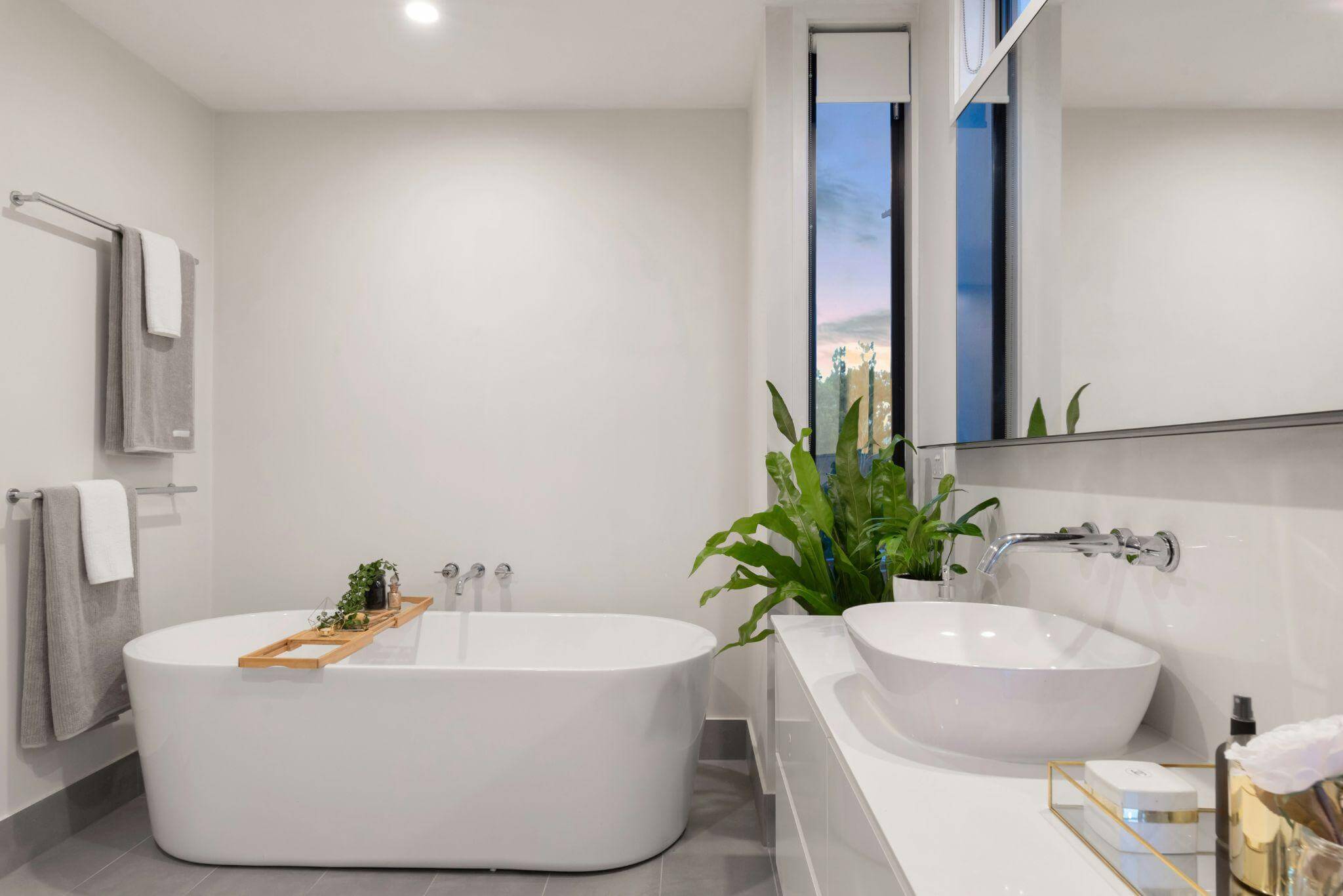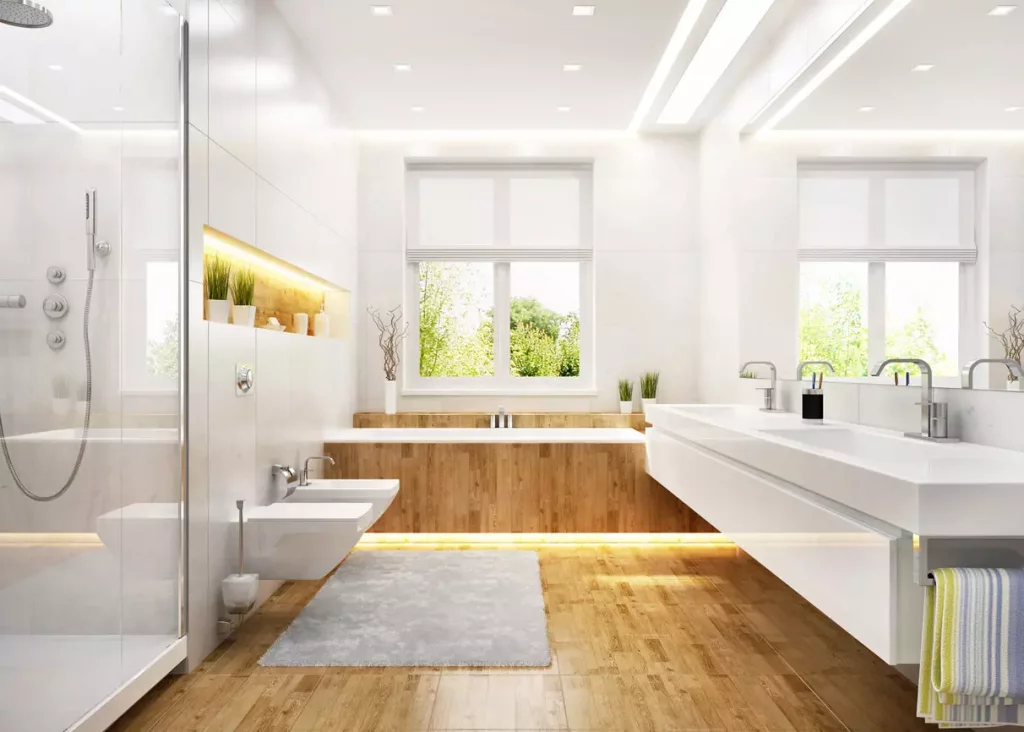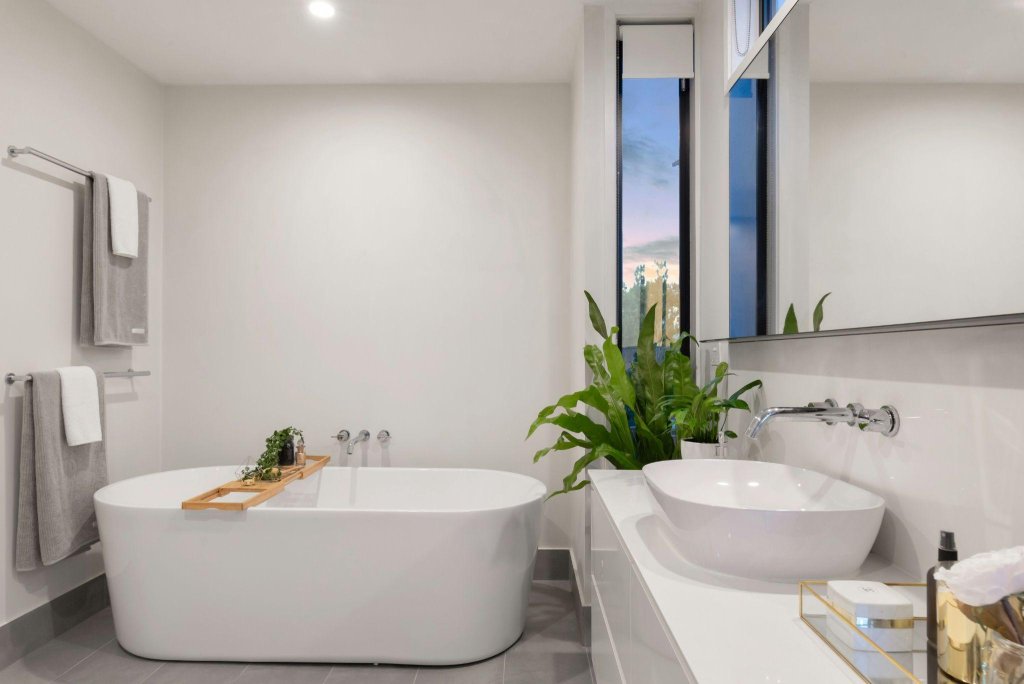Remodeling your bathroom can add significant value to your home. Installing a tub-to-shower conversion or upgrading vanity and sink sets will refresh its aesthetic and feel brand new!
Renovation often includes making necessary adjustments for safety. This may involve installing grab bars, removing lead paint (if applicable) and updating electrical to conform to code requirements.
Design
Bathrooms can be cramped spaces that demand special care in terms of plumbing, electrical wiring, tile work, countertops and cabinetry installation.
Even in smaller bathrooms, additions can quickly add up in cost so it’s essential that you plan your project carefully in terms of budgeting to stay within the costs associated with any changes and additions that arise during this process.
Remodels differ from renovations in that remodeling changes the layout of a space while refurbishing simply refreshes its appearance without altering its footprint or functionality.
Examples of remodeling changes could include tub-to-shower conversions, moving toilets or adding an additional sink – while layout modifications might include installing new storage solutions or an extension on vanity units. You can visit this site for bathroom storage ideas.
Remodeling includes upgrading lighting fixtures, refinishing bathroom cabinets and changing the color scheme or wallpaper in a bathroom, adding seating or seating arrangements and changing color schemes and wallpaper patterns.
Refinishing existing cabinets is an affordable way to bring an old room back to life; adding mirrors or wall art can have even greater effects. Seating additions can expand small bathrooms visually while creating unexpected focal points in larger ones – be it free-standing benches in showers or plush ottomans placed beside floating vanities.
Plumbing
Bathroom remodeling projects are an effective way to add resale value to your home, while remaining within your budget.
No matter the scale of your renovation or change project, plumbing and electrical updates will need to be made for code compliance as well as safety reasons if your house was built prior to 1979. Older homes frequently contain lead piping or wiring which poses serious health and safety risks to pregnant women, children, or the elderly. You can click the link: https://www.epa.gov/basic-information-about-lead-drinking-water to learn more.
Before designing, it is also essential to understand your style preferences. Some homeowners like matching features while others enjoy contrast and variety. Consider incorporating windows or skylights for increased natural lighting and creating the sense of space.

Electrical
No matter the purpose of your bathroom electrical work – whether installing new light fixtures or upgrading existing circuits – it’s crucial that it’s performed professionally.
Any work affecting the wiring of your plumbing and electrical systems, such as bathrooms, should only ever be carried out by certified electricians; corrosion or failure of components hidden behind walls could occur without warning until it’s too late.
All outlets in a bathroom should be protected with either GFCI or AFCI devices to help reduce the risk of electric shock, while any area in which water may come in contact should have its own dedicated electrical circuit and not share power with other rooms in the house.
Electrical outlets in a bathroom are essential to both its safety and capacity, so make sure there is at least one 20-amp circuit to accommodate overhead lighting and an exhaust fan without overburdening your system.
Changing major layout changes such as turning your tub into a shower or moving your toilet requires applying for a permit; minor modifications that don’t alter or affect support structures won’t need one.
Flooring

Remodeling a bathroom often starts with selecting new flooring. Because you touch and see it daily, flooring has an impactful visual and tactile impact. Plus, its importance increases comfort levels and resale value.
Tile floors are an excellent option, as they’re durable, easy to maintain, and come in various styles and patterns.
Cork flooring also makes an excellent choice, made of renewable natural resources with inherent mold resistance and mildew resistance that can even be sealed back up using polyurethane coating. When considering bathroom remodeling in Wilmington, consulting with experts can help you make the best decisions for your space. They can offer guidance from their extensive experience.
As part of your renovation plans, it is wise to remove and install a new subfloor prior to installing new flooring. This ensures moisture- and mold-resistant protection of the building structure as well as safety for users of your tub-to-shower conversion – for which a shower pan with enclosure and drain must be installed in order to meet building codes.
Cabinets
Cabinets are one of the key elements to consider when planning a bathroom remodel, providing storage as well as adding color, style, and dimension to your space. There is an assortment of styles and materials available that ensures there will be something suitable for every size or shape space in which to place cabinets.
Cabinets can serve many functions in your bathroom. Not only can they offer functional storage solutions, they also help minimize clutter. By having designated spots for towels, hair tools and toiletries they’ll no longer sit out on display for all to see; plus their reduced visual clutter makes the bathroom appear larger!
Lighting

Lighting is often overlooked when remodeling a bathroom, yet it plays a crucial role in both its function and aesthetics. Poor illumination can render a room feel dim or disorienting while strategically-placed fixtures can illuminate dark corners while emphasizing architectural features or art pieces.
Professional bathroom designers use several factors when devising an ideal lighting design: square footage of the room and the amount of natural light available will dictate which light fixtures and types are necessary.
Layering lighting is another key aspect to consider. While layering fabrics or furniture is commonplace, pairing different forms of illumination such as ceiling lights with sconces or fixtures allows for customized illumination throughout the day and depending on activity levels – while making sure all areas of interest are illuminated adequately.
Lighting designs should include dimmers to allow for easy control over brightness and create ambience. Dimmers also ensure you can find lighting suitable for each activity – and set a good mood in the bathing space!

